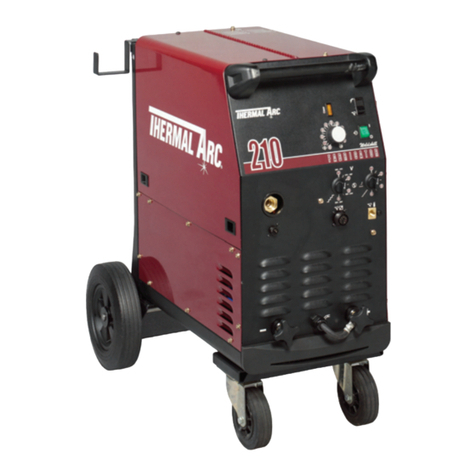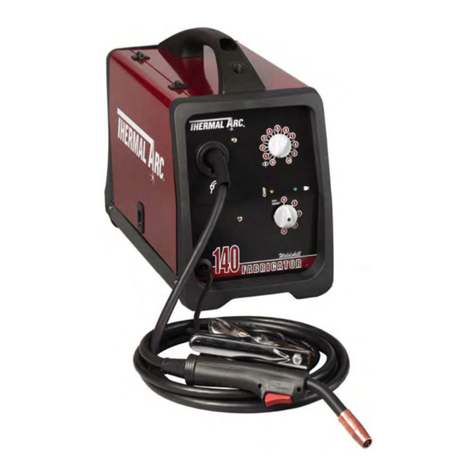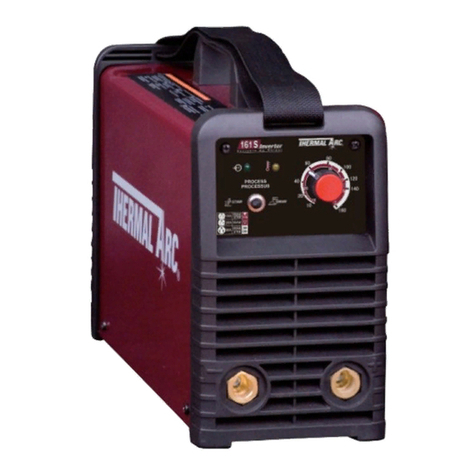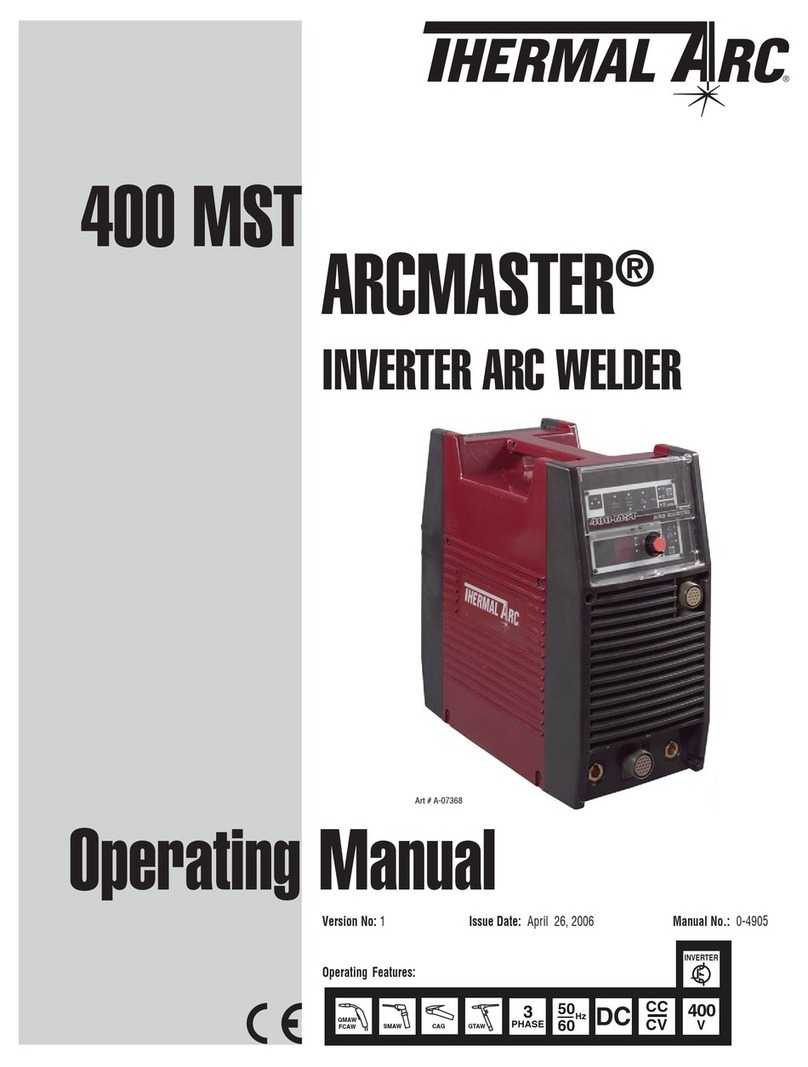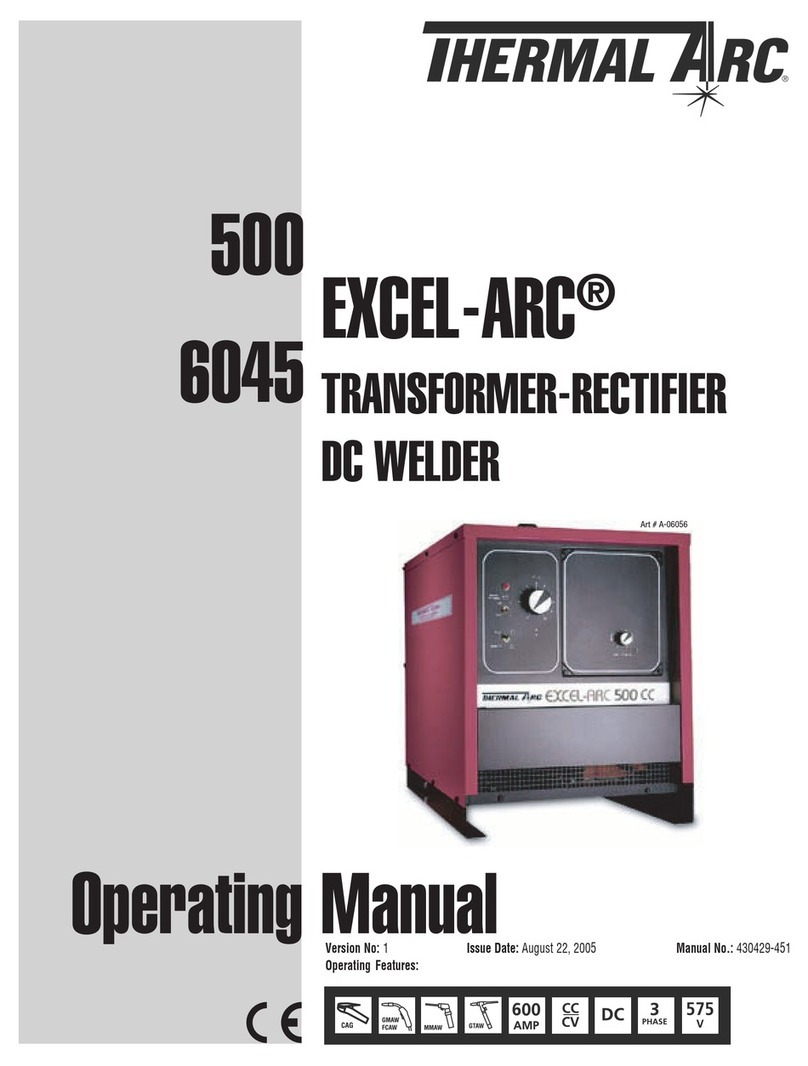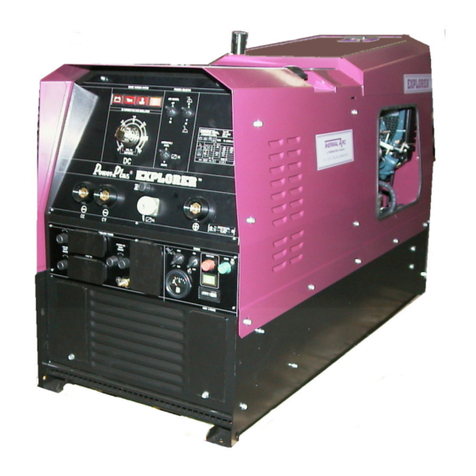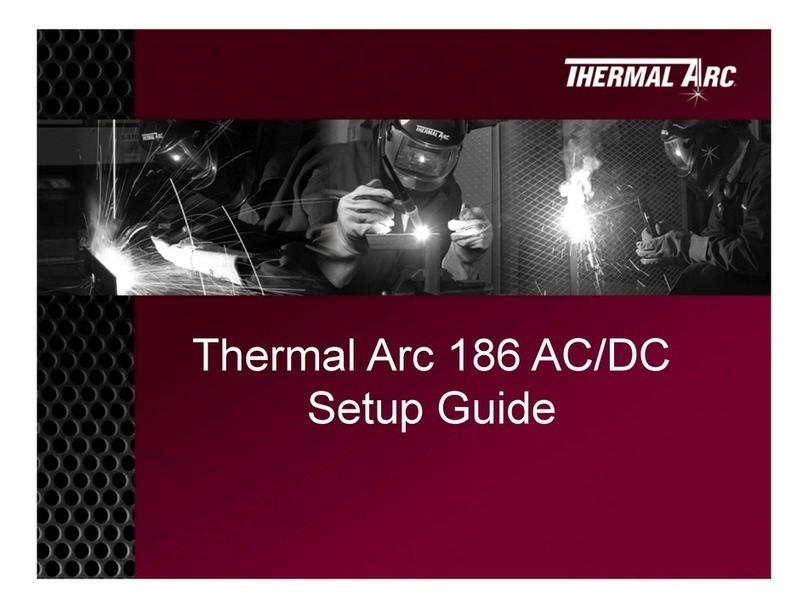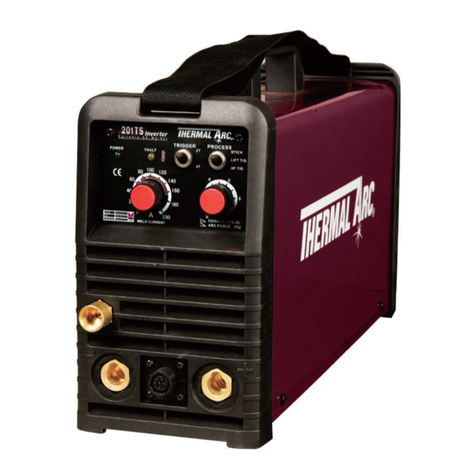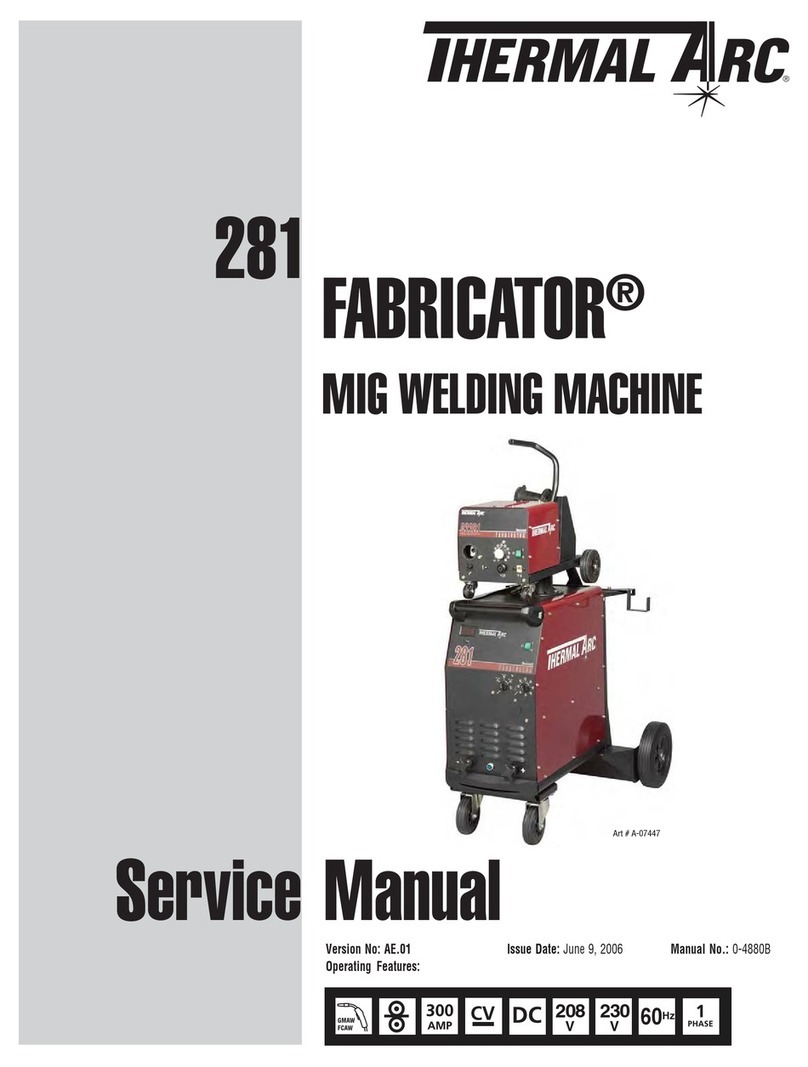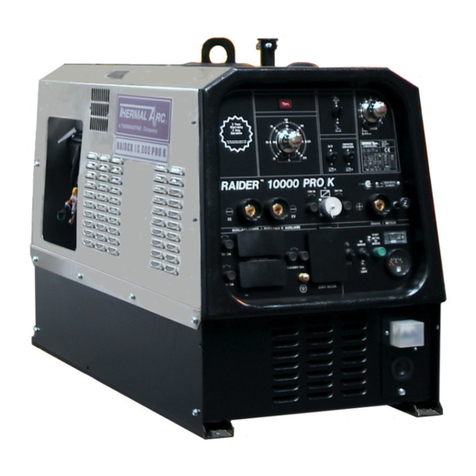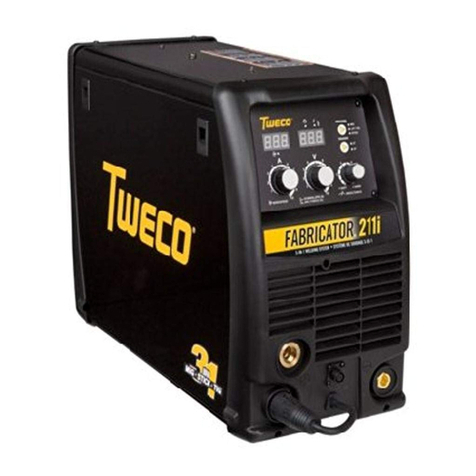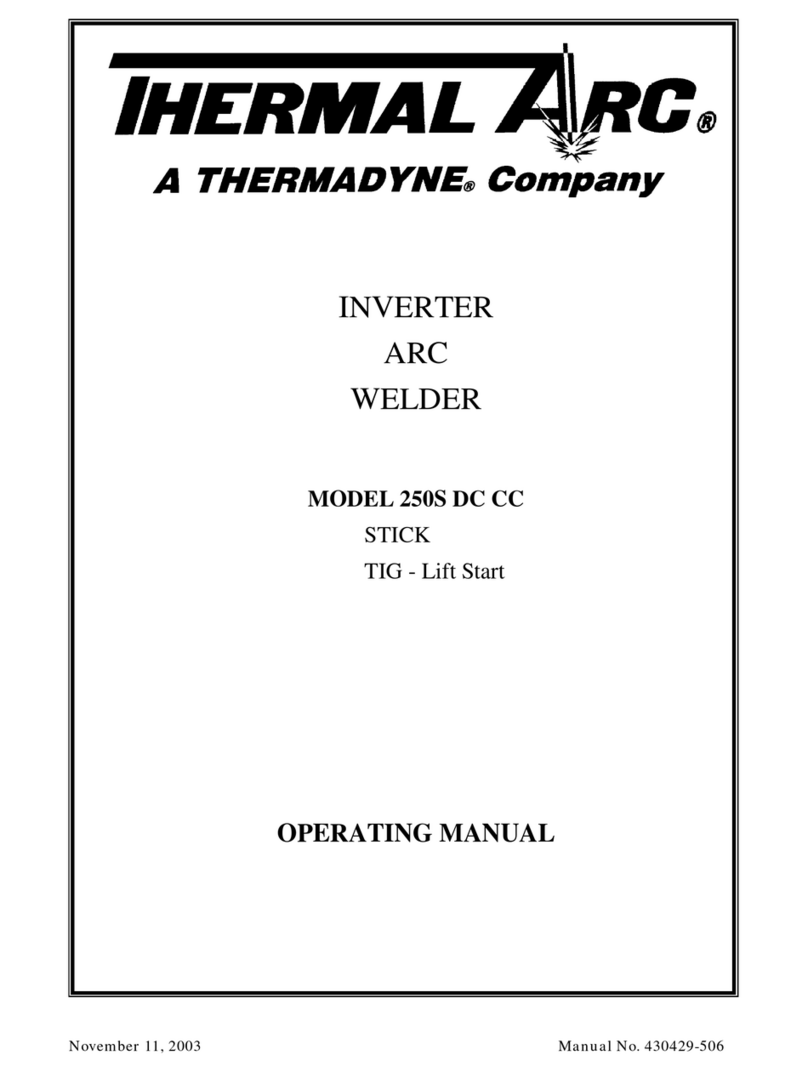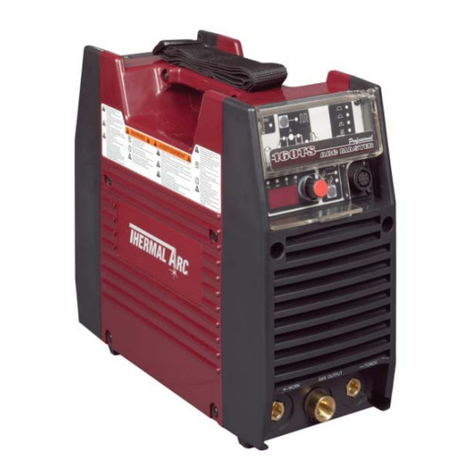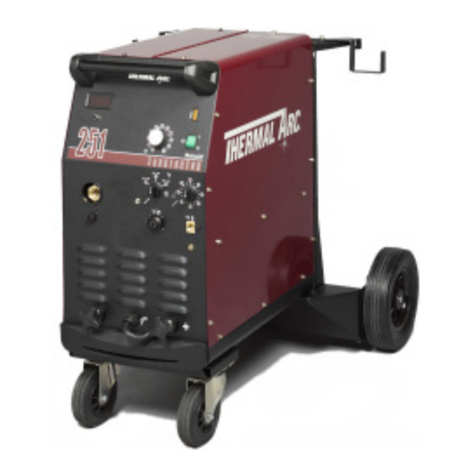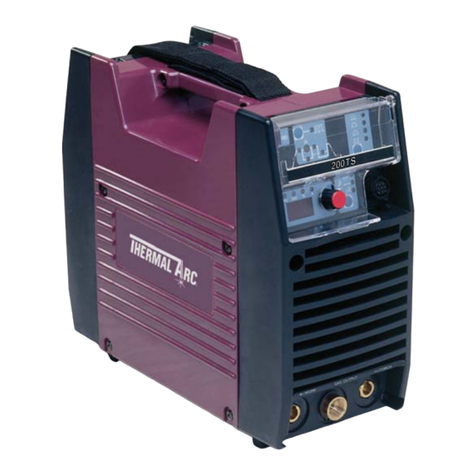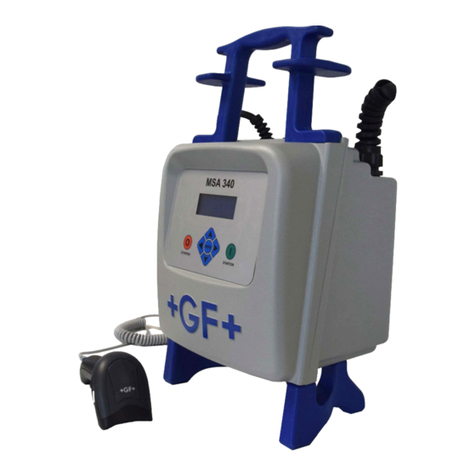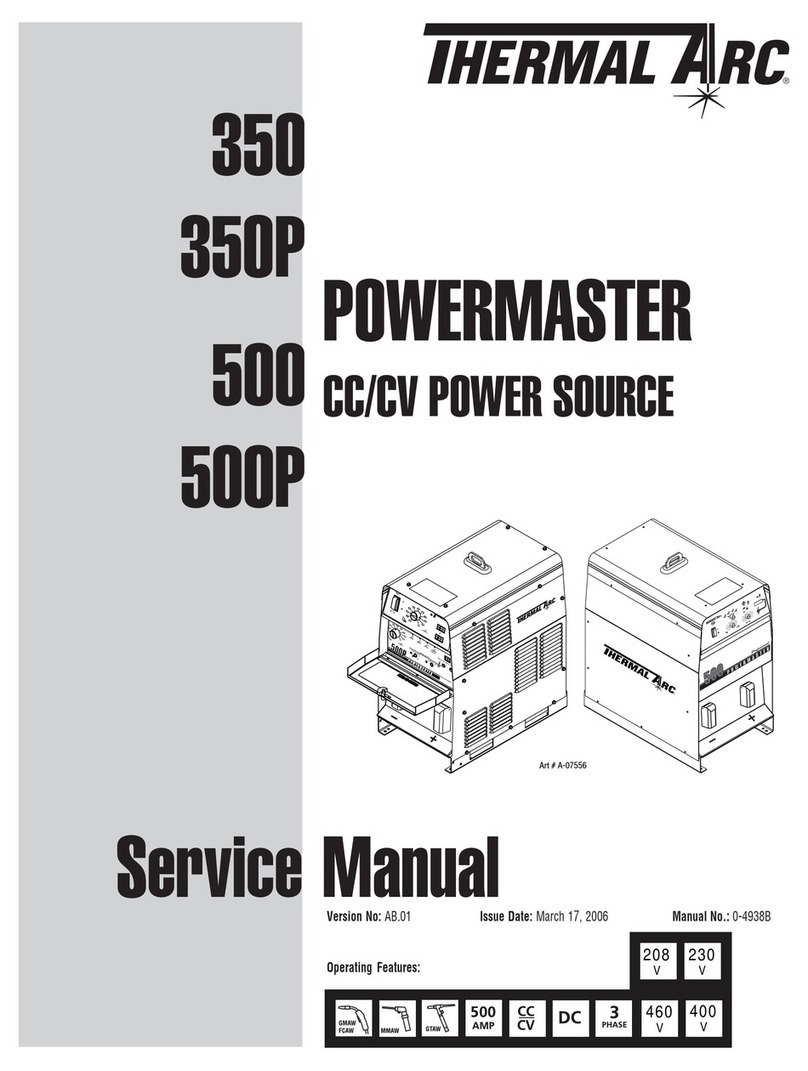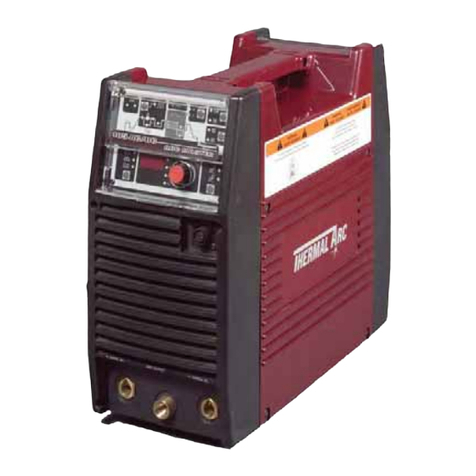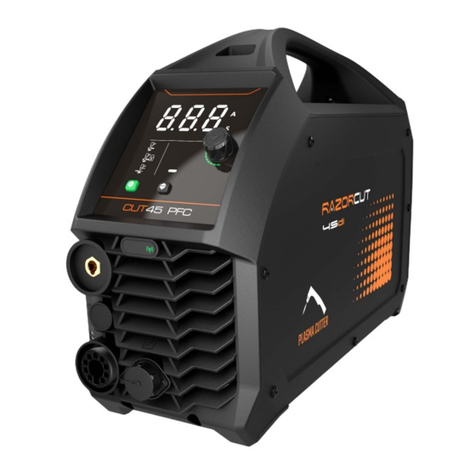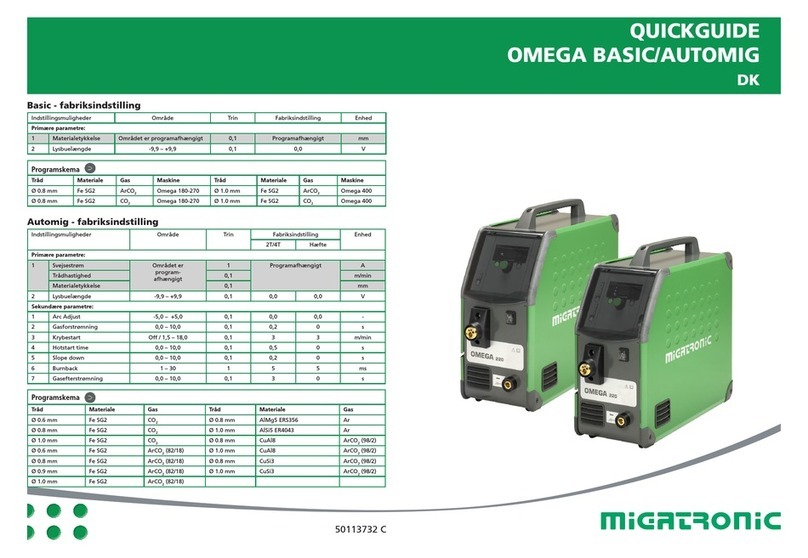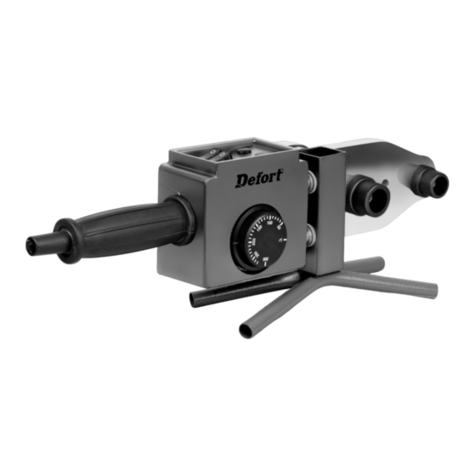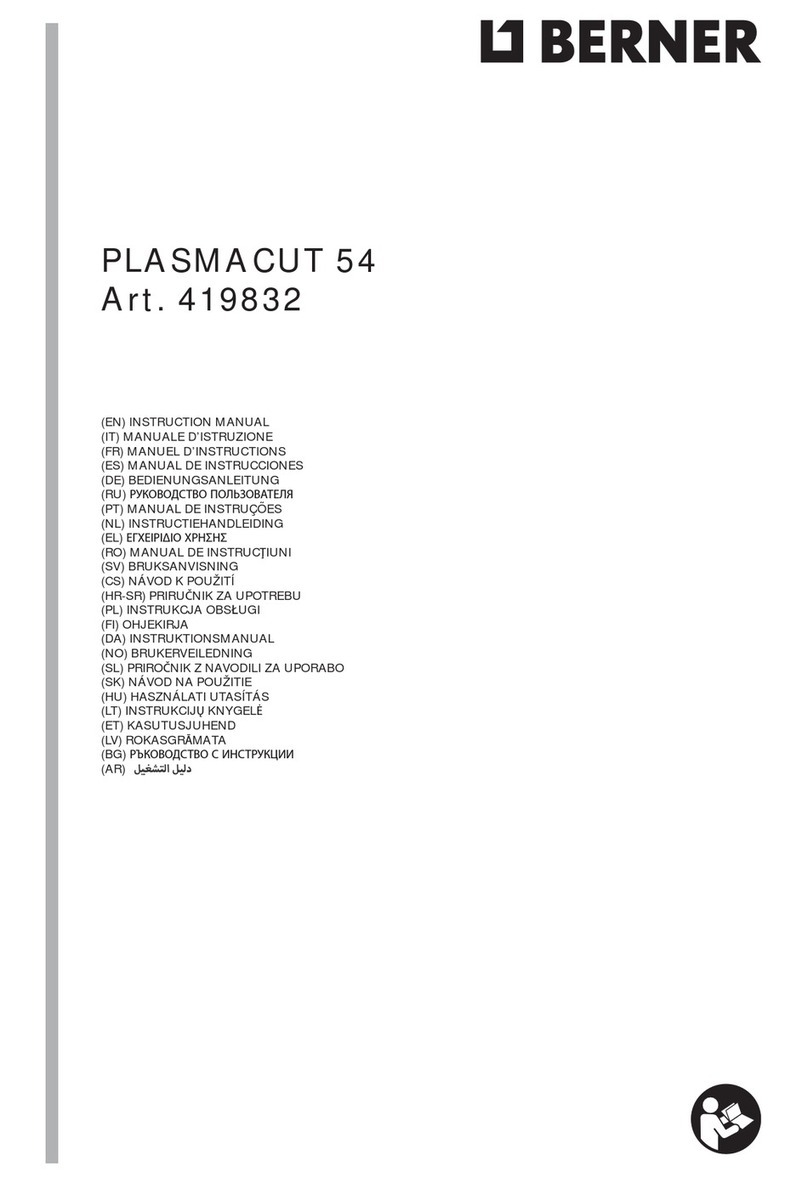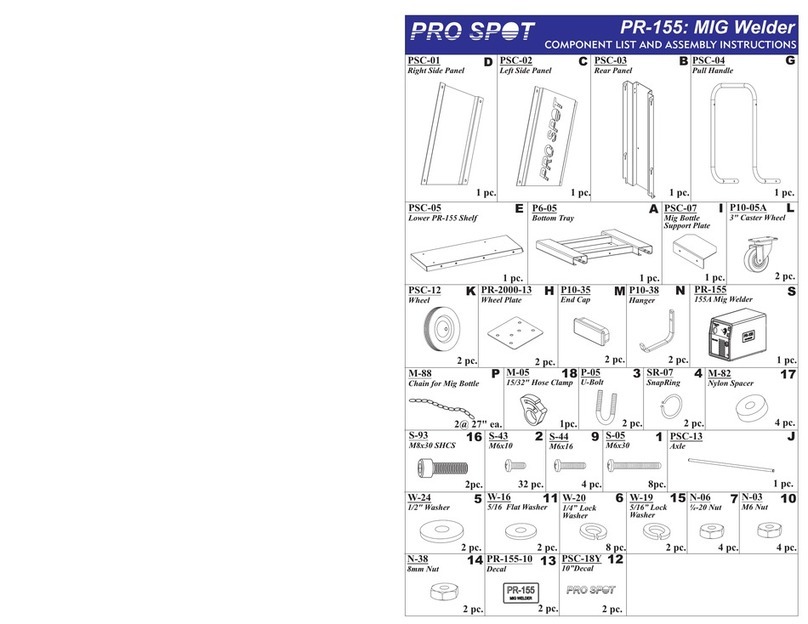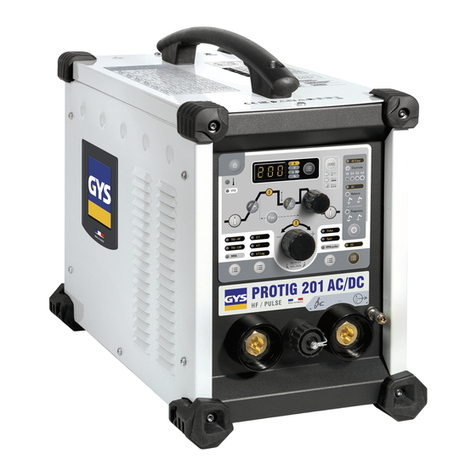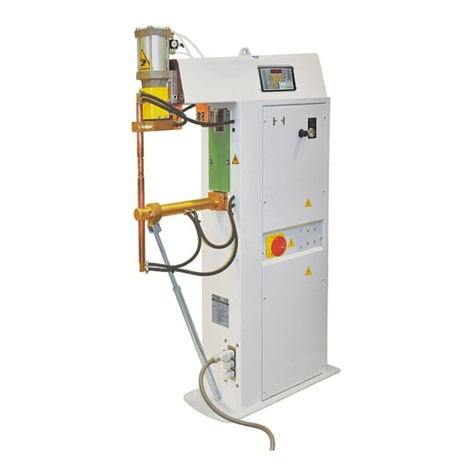1-2 October30, 2008
POWERMASTER 400SP, 500SP AUTOMATION
WARNING
FUMES AND GASES can be hazardous to your
health.
Welding produces fumes and gases. Breathing
these fumes and gases can be hazardous to your
health.
1. Keep yourhead out of the fumes. Do not breathethe fumes.
2. If inside, ventilate the area and/oruse exhaust at the arc to
remove welding fumes and gases.
3. If ventilation is poor, use an approved air-supplied respirator.
4. Read the Material Safety Data Sheets (MSDSs) and the
manufacturer’s instruction formetals, consumables, coatings,
and cleaners.
5. Work in a confined space only if it is well ventilated, orwhile
wearing an air-supplied respirator. Shielding gases used for
welding can displace aircausing injury ordeath. Be sure the
breathing airis safe.
6. Do not weld in locations neardegreasing, cleaning, or
spraying operations. The heat and rays of the arc can react
with vapors to form highly toxic and irritating gases.
7. Do not weld on coated metals, such as galvanized, lead, or
cadmium plated steel, unless the coating is removed from
the weld area, the area is well ventilated, and if necessary,
while wearing an air-supplied respirator. The coatings and
any metals containing these elements can give off toxic fumes
if welded.
WARNING
WELDING can cause fire orexplosion.
Sparks and spatterfly off from the welding arc. The
flying sparks and hot metal, weld spatter, hot
workpiece, and hot equipment can cause fires and
burns. Accidental contact of electrode orwelding
wire to metal objects can cause sparks, overheating,
orfire.
1. Protect yourself and others from flying sparks and hot metal.
2. Do not weld where flying sparks can strike flammable material.
3. Remove all flammables within 35 ft (10.7 m) of the welding
arc. If this is not possible, tightly coverthem with approved
covers.
4. Be alert that welding sparks and hot materials from welding
can easily go through small cracks and openings to adjacent
areas.
5. Watch forfire, and keep a fire extinguishernearby.
6. Be aware that welding on a ceiling, floor, bulkhead, orpartition
can cause fire on the hidden side.
7. Do not weld on closed containers such as tanks ordrums.
8. Connect work cable to the work as close to the welding area
as practical to prevent welding current from traveling long,
possibly unknown paths and causing electric shock and fire
hazards.
9. Do not use welderto thaw frozen pipes.
10. Remove stick electrode from holderorcut off welding wire
at contact tip when not in use.
WARNING
FLYING SPARKS AND HOT METAL can cause injury.
Chipping and grinding cause flying metal. As welds
cool, they can throw off slag.
Welding orcutting Electrode Size FilterWelding orcutting Electrode Size Filter
Torch soldering 2 Gas metal-arc
Torch brazing 3 or4 Non-ferrous base metal All 11
Oxygen Cutting Ferrous base metal All 12
Light Under1 in., 25 mm 3 or4 Gas tungsten arc welding All 12
Medium 1 to 6 in., 25-150 mm 4 or5 (TIG) All12
Heavy Over6 in., 150 mm 5 or6Atomichydrogen welding All 12
Gas welding Carbon arc welding All 12
Light Under1/8 in., 3 mm 4 or5 Plasma arc welding
Medium 1/8 to 1/2 in., 3-12 mm 5 or6 Carbon arc air gouging
Heavy Over1/2 in., 12 mm 6 or8 Light 12
Shielded metal-arc Under5/32 in., 4 mm 10 Heavy 14
5/32 to 1/4 in., 12 Plasma arc cutting
Over1/4 in., 6.4 mm 14 Light Under300 Amp 9
Medium 300 to 400 Amp 12
Heavy Over400 Amp 14
Eye protection filter shade selector for welding or cutting
(goggles or helmet), from AWS A6.2-73.

